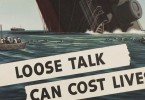 In his February 2011 column for Smart Business, Michael Feuer points out that not all assemblies are equal, and discusses ways to create presentation guidelines in your company to make people more productive and more focused on substance than form.
In his February 2011 column for Smart Business, Michael Feuer points out that not all assemblies are equal, and discusses ways to create presentation guidelines in your company to make people more productive and more focused on substance than form.
Everybody wants to have his or her cake and eat it, too.
When a presentation is made to a board of directors or a group of company outsiders, it needs to be right. The presenters always want to appear to have their act together and project an aura of all-knowing. It’s part of being human. However, what about important, yet more run-of-the-mill, presentations to smaller groups on nonearthshaking matters? Is the cost of preparation worth the return?
For the last few months, each time I attended a meeting, either within my own company or for other companies and organizations with which I’m involved, I’ve asked those responsible for the preparation how many hours they invested in producing the final show and tell. Almost without exception, I’ve been taken aback by the amount of energy expended. This begs the question: What other, more important activities, providing a better return, didn’t get done because of this diversion?
Perhaps more startling was the number of hours spent on “dress rehearsal” run-throughs, particularly for internal meetings.
I have no problem with the amount of work it takes for big meetings, particularly with outsiders, who can cause you untold grief if one looks amateurish, indecisive or, worse, a fool. If someone who works for me committed this near-fatal sin of lack of preparation, he or she would receive a quick trip to the proverbial woodshed. On the other hand, I’m a big believer of certain types of less formal presentations that include brainstorming components that are more impromptu, with fewer constraints on form and sharper focus on substance. I’m always pleasantly surprised with the golden nuggets, representing new thinking and ideas, that surface when participants focus on making creative contributions rather than obsessing on what others may think.
So, how do you, as a leader, foster creating acceptable presentation guidelines that will make your people more productive and also communicate to them that not all assemblies are equal? Let’s take the work involved for major outsider confabs for investors, bankers, important vendors and customers off the table, while recognizing you’re not going to risk taking only half measure just to spare a little work and a few extra dollars. Internal presentations or meetings with external consultants, however, are a different matter. For these types of sessions, the top-of-the-mind methods used by improvisational comedians extraordinaire, such as Robin Williams and Jerry Seinfeld, can be more productive, more fun and produce much better results.
To get your team pointed in the right direction, start asking after each meeting how much time was put into preparation. This simple exercise will reveal if you’re getting the appropriate return on the investment. Next, working with your team, create a template that is acceptable for each type of presentation. One size doesn’t fit all. A high-powered gathering of movers and shakers requires whistles and bells versus a much more simplified presentation for an intimate get-together of your inner circle. Provide flexible guidelines, including the type of handouts to be utilized and the form of graphics used from very elaborate presentations that would put a Las Vegas chorus line to shame to basic easy-to-prepare flip charts and PowerPoints that more than suffice and make the right impression.
Before any presentation is launched, always ask, ‘Who is the audience, and what are the intended results?’ By doing this, you will quickly determine if the costs are commensurate with the expected results. There is a difference between an all-hands-on-deck undertaking and a few scribblings on a legal pad for a smaller session’s talking points. When you follow this protocol, your people will gain respect for you because it shows that you understand that their time is money and you have an appreciation for what it takes to get the job done.
A long-ago favorite Burger King television commercial portrayed kitchen workers belting out the lyrics, “Hold the pickles, hold the lettuce, special orders don’t upset us,” with the payoff tagline, “Have it your way.” Special orders in the form of elaborate presentations that don’t fit the audience should definitely upset you because of their costs. Instead, have it your way by substituting the “burger” with a “cake” topped with a not too rich but still sweet and easily digestible icing.
Michael Feuer co-founded OfficeMax in 1988, starting with one store and $20,000 of his own money. During a 16-year span, Feuer, as CEO, grew the company to almost 1,000 stores worldwide with annual sales of approximately $5 billion before selling this retail giant for almost $1.5 billion in December 2003. Feuer serves on a number of corporate and philanthropic boards and is a frequent speaker on business, marketing and building entrepreneurial enterprises. “The Benevolent Dictator,” a book by Feuer that chronicles his step-by-step strategy to build business and create wealth, will be published by John Wiley & Sons in late spring 2011. Reach him with comments at [email protected].






